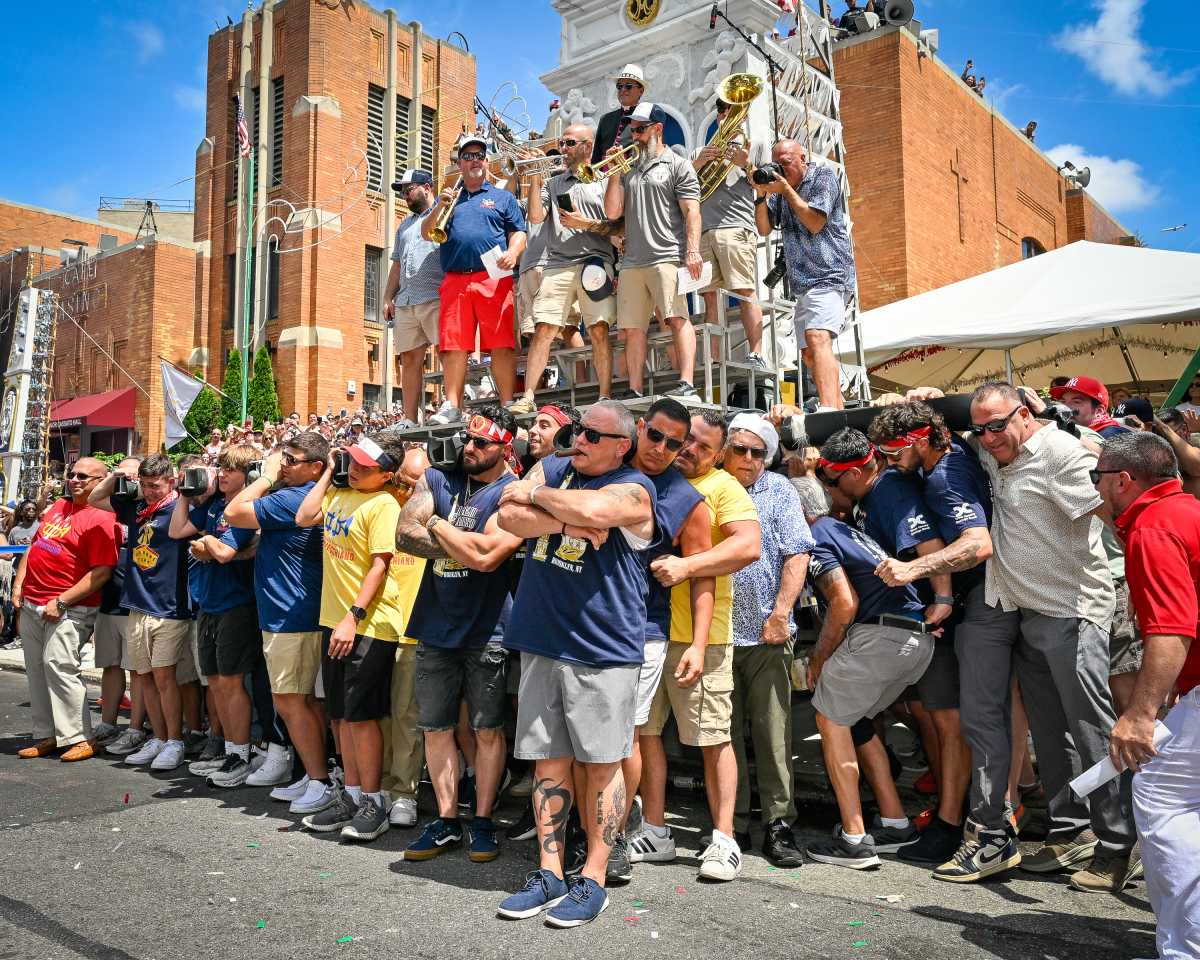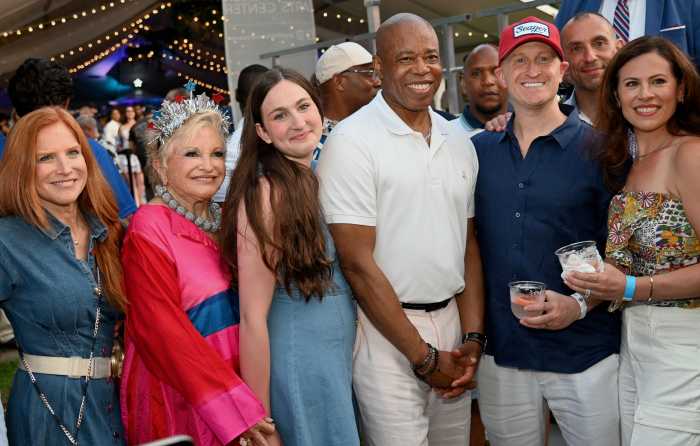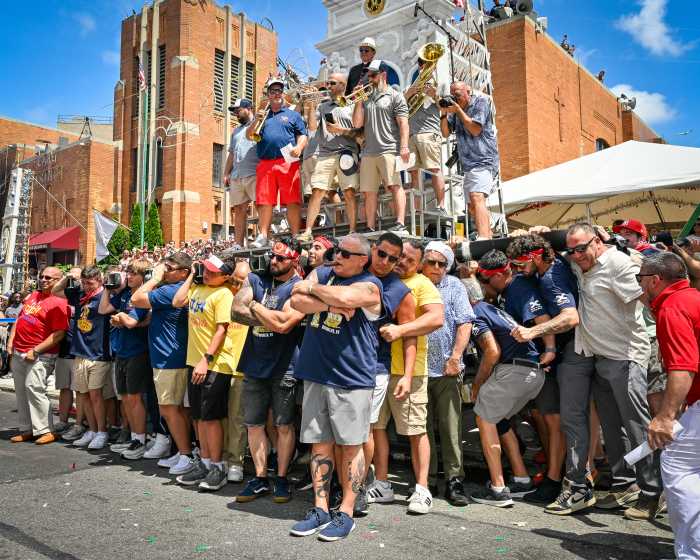By David Stanke
Volume 19 Issue 34 | January 5 – 11, 2007
Talking Point
What if… they actually wanted to save Deutsche?
Striking union workers recently delayed the deconstruction of Deutsche Bank. This was the latest in a long series of delays. It is as if there is inevitability to the survival of this building, a destiny. After years of fighting for its destruction, I surrender to its overwhelming power.
Though this building was hated during its life, people are now drawn to it as a deserted, desolate and toxic hovel. The ugly, made uglier, has attained true beauty.
Deutsche Bank will restore Lower Manhattan. Eliot Spitzer has promised to review everything. Gov. Spitzer, save Deutsche Bank . . . for us, for the tourists, for our Germans, and for our ancestors!
The Coalition of Deutsche Bank Lovers formed in late-night discussions along the seedy but smokeless and trans-fat free bars of lower Greenwich St. It began as an impossible dream. But if we rise with one voice, this precious ruin can be saved.
Any plan for Deutsche Bank must first pass muster with the Daniel Libeskind master plan. Daniel immediately tuned in to the rhetorical possibilities: “Deutsche Bank is an engineering wonder constructed on bedrock foundations and designed to hold thousands of ambitious business people. The structure withstood the unimaginable trauma of the destruction, asserting the durability of commerce and greed and the value of wealthy life. It symbolizes the triumph of architecture over anarchy.” For $100,000, Mr. Libeskind offered to alter the master plan and to make two public appearances for the cause.
A representative for Coalition for the Compulsive and Pure Preservation of History provided further insight: “No one ever liked looking at it or working in it. But the W.T.C. towers hit it and it is still standing. Shouldn’t that count for something? Every day that it decays, further enhances its ugliness, and its historic importance. Beautiful things just don’t have that historical depth.”
Tourists in Hazmat suits could climb through the building. Experts in authentic recovery attire would shuffle through authentic 9/11 dust, removing their masks to explain the recovery to tourists. The putrid smell of 9/11 could be pumped throughout the building.
The doors to the Lower Manhattan Development Corporation, the place where W.T.C. activists make dreams come true, were locked, but a sign hung in front of the dark offices: “The L.M.D.C. will be closing shortly. For changes to W.T.C. plans, please gather 15 signatures and two newspaper articles. Notarize your request and slide it under the door. It is never too late and money is no object.”
The Regional Plan Association was immediately on board: “Our studies indicate that the density of commercial buildings at the W.T.C. is 32.84% above acceptable limits for productive human habitation. On the other hand, the density of contaminated, ruinous eyesores is very low.”
The E.P.A. made only the following statement: “Deutsche Bank is clean and environmentally safe. Unfortunately, the L.M.D.C.’s plans to clean the building do not meet our standards.”
The most important hurdle is to get the backing of 9/11 victims’ families. I was relieved to find tentative support. One family member enthusiastically embraced D.B.: “9/11 was all about hell, hatred, destruction and chaos. The only way to honor the deceased is to preserve the handiwork of those who killed them. And besides, it will attract millions of tourists who will love to shop and dine in the shadow of this ruin.” Another wants the building saved, but she has devised an alternate solution: “Nothing should be within 10 blocks of the memorial. This building should be moved intact to New Jersey, alongside the new W.T.C. tour bus parking facility.”
But these agendas fail to capture the soul of Deutsche Bank. One local resident said: “When the first plane hit the North Tower, my children took shelter under the strong, enduring arms of that building. When the South Tower was hit, thousands, maybe millions, took shelter behind it. The rigid determination and resilience of that building shielded me as I ran down Greenwich St. That building is freedom. It is democracy. It is America!” I propose this building now be called the Residents’ Ruin.
With such unanimity, how could Spitzer not save this building? The dawn of the new year once again gives me hope. One day, I will walk the floors of Deutsche to the edge of the 20-story gash. I will gaze across the W.T.C. site to the preserved ruins of Fiterman Hall. In the emptiness between these icons of American business and education, I will finally understand the true meaning of 9/11. I will finally “get it.” And behind me will come millions of tourists, to experience exactly my enlightenment.
David Stanke lives and writes Downtown. His e-mail is davestanke@ebond.com





























